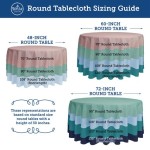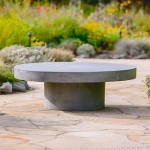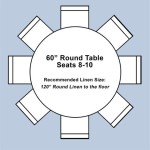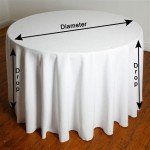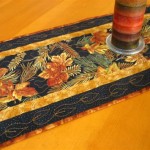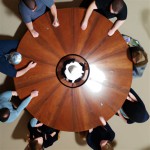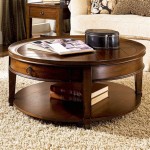Wood Base For Round Table: Crafting The Perfect Looks
The wood base of a round table is a critical design element that significantly influences its overall aesthetic and structural integrity. Selecting the appropriate wood base involves considering various factors, including the table's intended style, the desired level of stability, and the overall dimensions of the tabletop. Careful consideration of these elements ensures a harmonious balance between form and function, resulting in a visually appealing and durable piece of furniture.
Wood lends itself to a multitude of styles, ranging from rustic and traditional to modern and minimalist. The choice of wood species, the base's design, and the finish applied contribute to the table's overarching character. A well-chosen wood base complements the round tabletop, enhancing its inherent beauty and creating a cohesive design.
Beyond aesthetics, the wood base contributes significantly to the table's stability. A poorly designed or inadequately constructed base can lead to wobbling or instability, compromising the table's usability. Consequently, factors such as the base's footprint, the number of legs or supports, and the joinery techniques used are paramount in ensuring a stable and reliable foundation.
Understanding Wood Species and Their Characteristics
The selection of the wood species is a foundational decision in crafting the perfect round table base. Different wood species offer distinct characteristics in terms of color, grain pattern, hardness, and durability, each influencing the table's aesthetic appeal and longevity. Hardwoods, such as oak, maple, and cherry, are generally preferred for table bases due to their superior strength and resistance to wear and tear. Softwoods, such as pine and cedar, although less dense, can be suitable for certain design styles and applications, particularly when a rustic or distressed look is desired.
Oak is a popular choice due to its strength, durability, and prominent grain pattern. It is available in various colors, ranging from light tan to reddish-brown, and readily accepts stains and finishes. Maple offers a smoother, more uniform grain pattern and a lighter color, making it well-suited for contemporary designs. Cherry is prized for its rich, reddish-brown hue and smooth texture, which deepens and becomes more lustrous with age. Walnut, another hardwood option, possesses a dark, chocolate-brown color and a distinctive grain pattern that conveys a sense of luxury and sophistication.
The moisture content of the wood is another critical factor to consider. Wood expands and contracts with changes in humidity, and using improperly seasoned wood can lead to warping or cracking. Kiln-dried wood, which has been carefully dried to a specific moisture content, is generally recommended for furniture construction to minimize these risks.
The wood's grain orientation also plays a role in the base's stability and structural integrity. Quarter-sawn wood, in which the growth rings are perpendicular to the face of the board, is more resistant to warping and twisting than plain-sawn wood, in which the growth rings are parallel to the face. Incorporating quarter-sawn wood into critical structural elements of the base can enhance its long-term durability.
Exploring Base Design Options
The design of the wood base is instrumental in defining the overall style of the round table. Numerous design options exist, each conveying a unique aesthetic and affecting the table's functionality. Common base designs include pedestal bases, four-legged bases, trestle bases, and sculptural bases, each offering distinct advantages and disadvantages.
Pedestal bases consist of a single central support, often branching out into multiple feet for added stability. They are aesthetically pleasing, allowing for ample legroom around the table. Pedestal bases can be intricate and ornate, or simple and minimalist, depending on the desired style. The size and shape of the pedestal should be carefully proportioned to the tabletop to ensure stability and visual harmony. A wider base is generally required for larger tabletops to prevent tipping.
Four-legged bases are a classic and versatile option, providing excellent stability and support. The legs can be straight, tapered, splayed, or curved, allowing for a wide range of design variations. The placement of the legs is crucial; positioning them too close to the center of the tabletop can compromise stability, while placing them too far out can create an awkward appearance. Achieving a balanced and visually appealing leg placement is essential.
Trestle bases consist of two or more vertical supports connected by a horizontal stretcher. They offer a rustic and traditional aesthetic, often associated with farmhouse or country-style furniture. Trestle bases provide excellent stability, particularly for larger tables. The stretcher adds strength and rigidity to the base, preventing it from racking or twisting. The design of the trestle can range from simple and functional to elaborate and decorative.
Sculptural bases are artistic and unconventional, often featuring abstract or organic forms. These bases serve as focal points, adding a unique and personalized touch to the table. Sculptural bases can be crafted from solid wood or constructed from multiple pieces joined together. They require careful engineering and construction to ensure stability and structural integrity. These are often higher in price due to the amount of labor involved.
Considerations for Stability and Joinery
The stability of the wood base is paramount for the table's usability and longevity. A wobbly or unstable table is not only frustrating but also poses a safety hazard. Several factors contribute to the base's stability, including the size and shape of the base, the number and placement of supports, and the quality of the joinery.
The footprint of the base, or the area it covers on the floor, is a crucial determinant of stability. A wider footprint provides a more stable foundation, particularly for larger tabletops. The base should be wide enough to prevent the table from tipping, even when subjected to uneven loads. The height of the base also affects stability; a taller base is more susceptible to tipping than a shorter base.
The joinery techniques used to connect the various components of the base are critical for its strength and durability. Mortise-and-tenon joints, dovetail joints, and dowel joints are common choices for wood furniture construction. Mortise-and-tenon joints, in which a projecting tenon is fitted into a corresponding mortise, provide excellent strength and resistance to racking. Dovetail joints, characterized by interlocking wedge-shaped projections, are renowned for their strength and aesthetic appeal. Dowel joints, which utilize cylindrical dowels to connect two pieces of wood, are a simpler and more economical option, but may not be as strong as mortise-and-tenon or dovetail joints.
In addition to traditional joinery techniques, modern adhesives can be used to enhance the strength and durability of the base. High-quality wood glues, such as polyurethane or epoxy adhesives, provide a strong and permanent bond between wood components. Clamping the joints during the gluing process is essential to ensure proper alignment and maximum bond strength.
Reinforcing the base with metal brackets or supports can further enhance its stability and structural integrity, especially for larger or heavier tabletops. Metal brackets can be concealed within the base or integrated into the design as a decorative element. Care should be taken to select appropriate hardware that is compatible with the wood species and finish.
The weight distribution of the tabletop also influences the base's stability. A heavier tabletop requires a stronger and more robust base to prevent tipping or wobbling. Distributing the weight evenly across the tabletop can help to minimize stress on the base. Placing heavier objects closer to the center of the table can also improve stability.
Finally, ensuring that the base is properly leveled is essential for optimal stability. Uneven floors can cause the table to wobble, even if the base is otherwise well-designed and constructed. Adjustable feet or leveling glides can be installed on the bottom of the base to compensate for uneven surfaces.

Diy Wood Slat Drum Table Base How To Blushing Bungalow So Cute You Ll Blush

The 7 Best Dining Tables And How To For One Reviews By Wirecutter

Best Round Dining Room Tables 2024 A Beautiful Mess

Round Wood Top Coffee Table With Metal X Base

Hand Crafted Oval Dining Table With Quinn Base By Brick Mill Craft Furniture Custommade Com

Wooden Table Lamp Base Holder Replacement Modern Fitments Universal Craft Decor Simple To Use Durable For Diy Hotel Bedside Study Tabletop C Com

How To Paint A Table Without Sanding Amber Oliver

Custom Live Edge Dining Table Kitchen Black Walnut Office Wooden Slab Industrial

Craft Oval Table Pierre Augustin Rose The Invisible Collection

Custom Dining Tables Bassett Furniture
Related Posts


